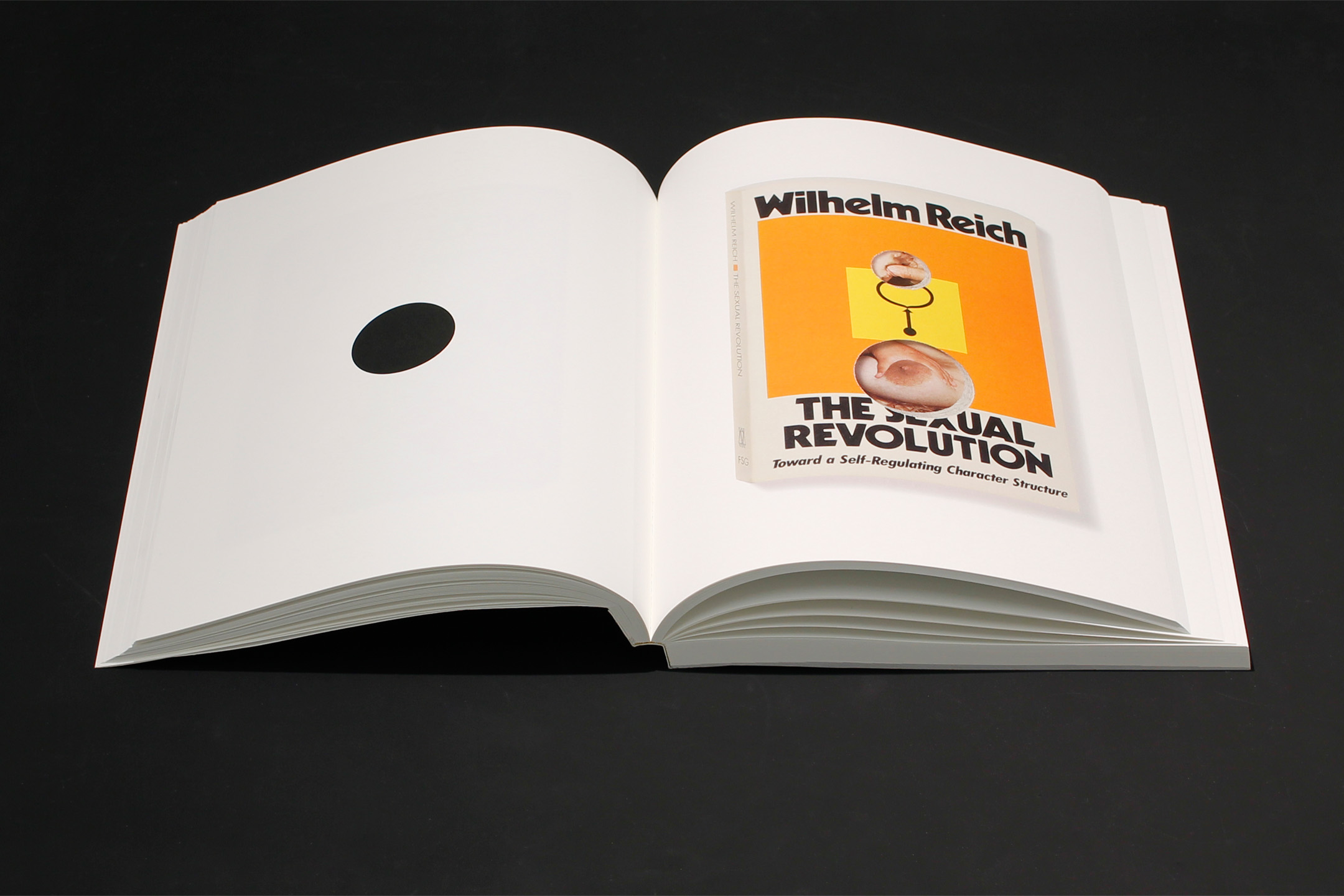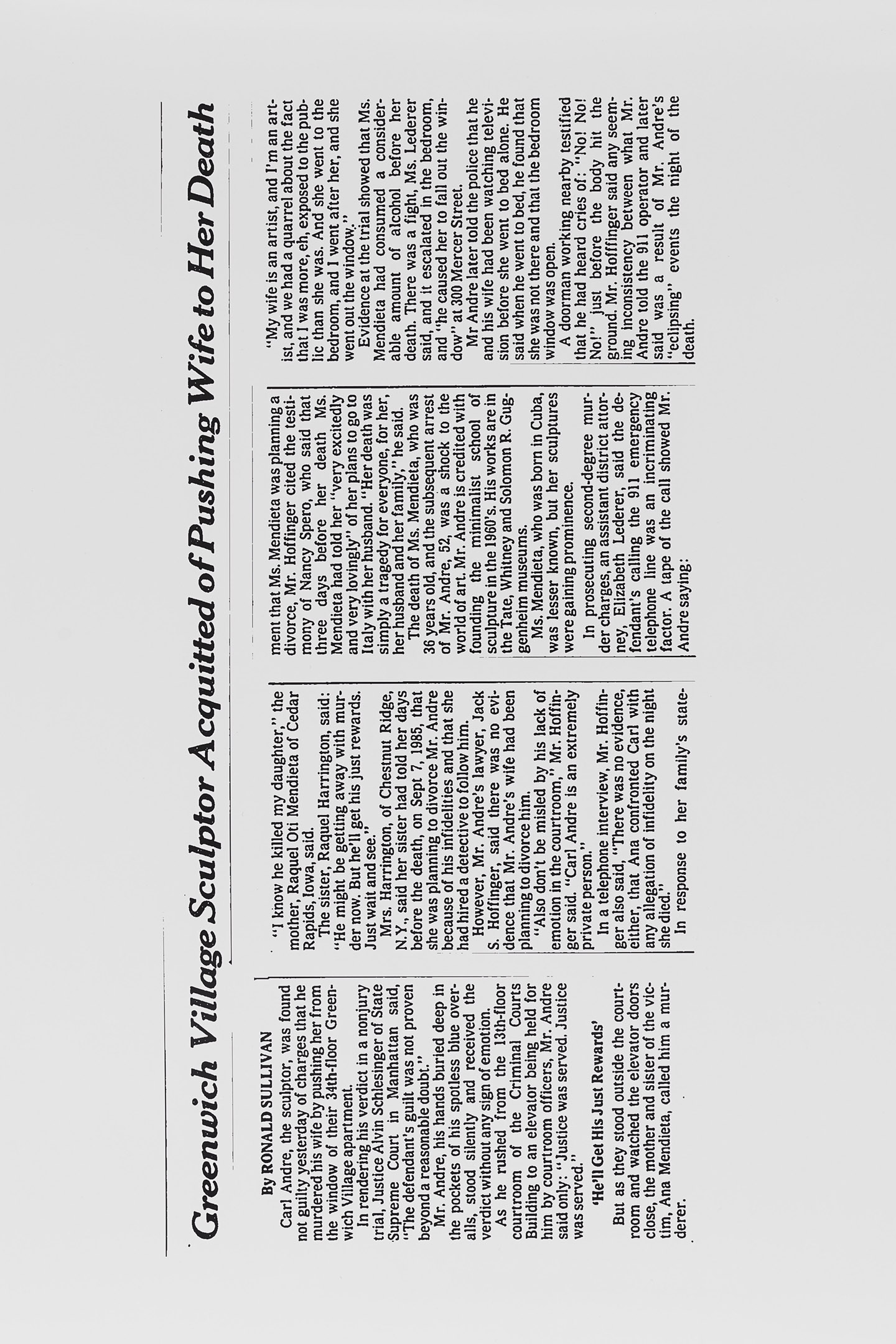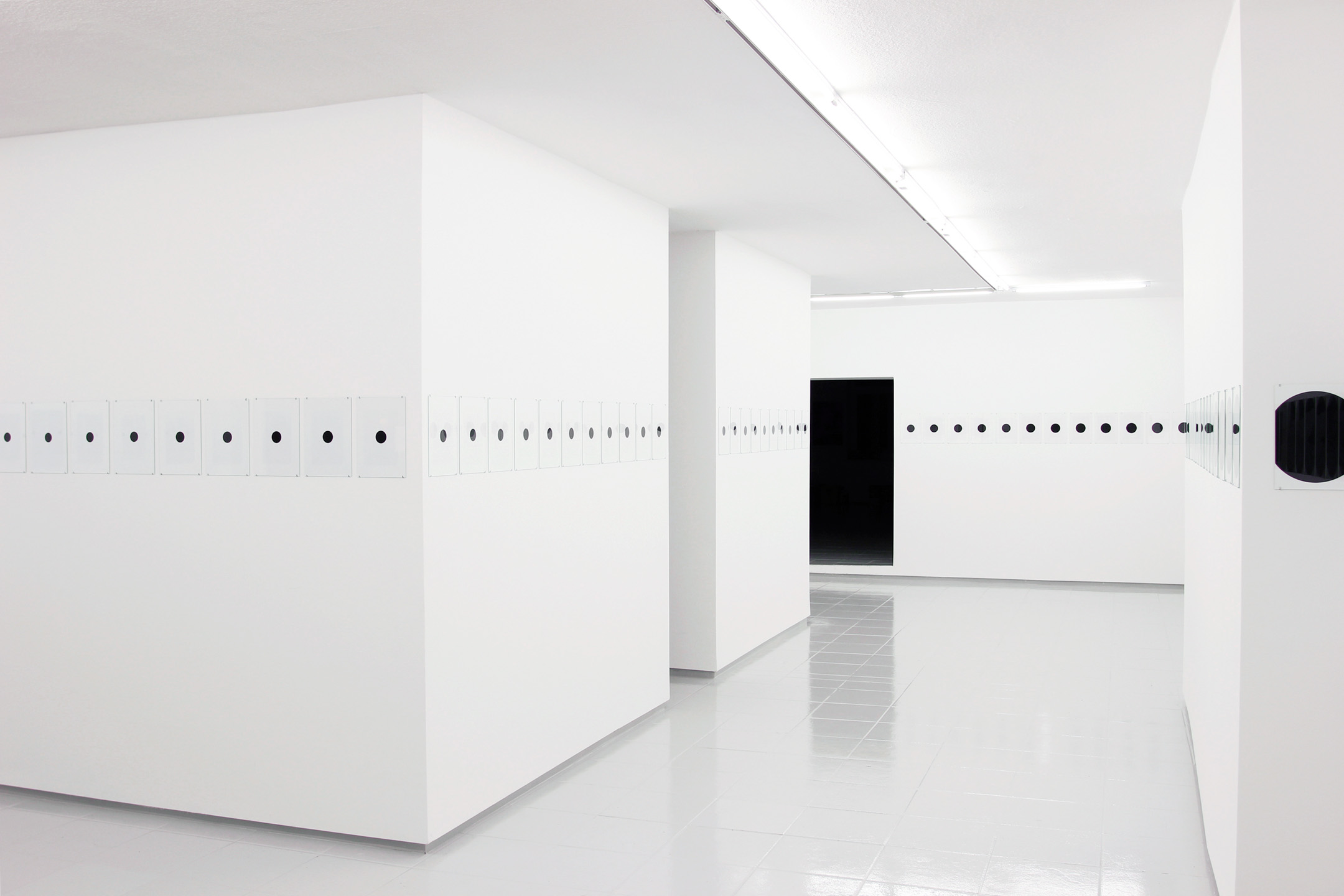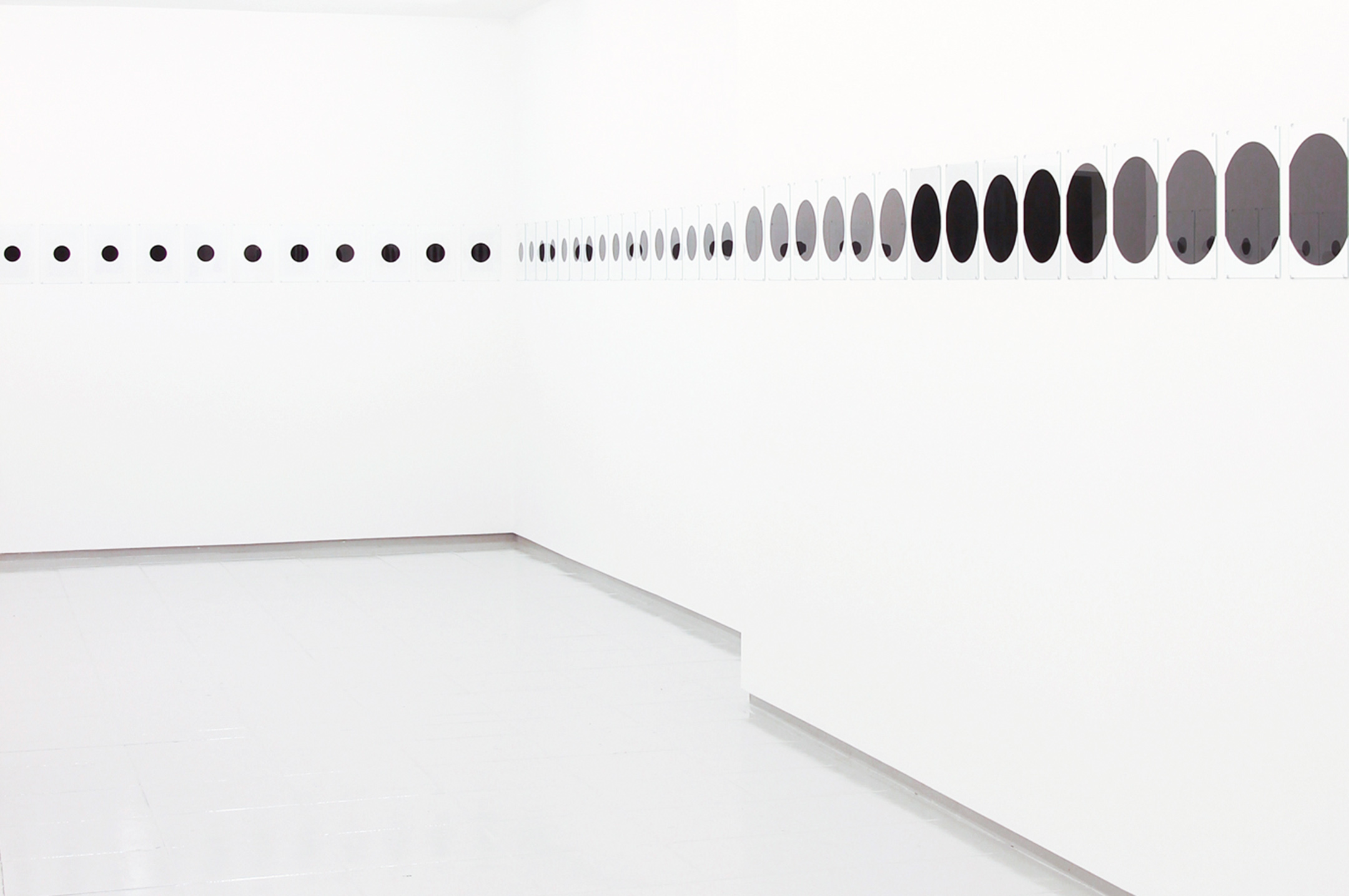Ana and Carl (and some other couples) (collaboration with Nicolas Guagnini, 2015)
126 intervened books, print ephemera
Ana and Carl (and some other couples) (2014), a collaboration between Leigh Ledare and the artist Nicolás Guagnini (b. 1966), addresses issues of intimacy and estrangement entwined with the social. Ledare and Guagnini produced a sculptural set of 126 intervened books, appropriating classics from the contemporary Western canon—including texts on philosophy, psychology, theology, feminist and queer theory, among others. Arranged on the floor in an orderly “minimalist” grid, these books have been drilled out—with one, two, three and four inch holes—creating apertures which focus the viewer’s gaze on images culled from an archive of 1970s pornography. Montaged between the pages of the original volumes, the array of positions, orientations and power relations indexed within these erotic representations in turn deform the existing aesthetic vocabulary of the books’ covers, thereby caricaturing the gravity and authority of their content. Hovering over these allegorical objects—that invoke at once minimalism and the camera lens, as well as the ravenous public appetite for titillating content—are two names: Ana and Carl. These are, of course, the artists Ana Mendieta and Carl Andre.
To accompany the installation, Ledare and Guagnini created an artist’s book of the same name (published by PPP Editions), which reproduces images of these sculptural objects. The pages of the artist’s book have been perforated so that they can be removed, allowing the book’s content to be displayed sequentially in two additional iterations: images of the covers of the 126 intervened books printed on recto; or on verso, a solid black circle that dilates as the book progresses. Indexing the incision into the original books, the accelerating expansion of this circle suggests not only the act of falling, but also a camera’s movement towards the viewer. As one reaches the concluding pages the circle finally swallows the reader (and the book itself) whole. The cover of the artist’s book displays a reproduction of a New York Times article from February 12th, 1988, describing Andre’s acquittal on charges that he pushed Mendieta, his wife, to her death from the window of their 34th-floor apartment during a drunken altercation. This horror story from the annals of American art, in which an “ideal” couple appears to transform into a distressingly exact analogy for colonialist and misogynist violence, interacts powerfully with the book itself. Much as Andre’s inconsistent testimony and bizarre affect belied his innocence, so Ledare and Guagnini’s material interventions reveal the irrational entanglement of violence and authority: no longer repressed, the human need for a spectacle in which sex and death are as one surfaces, here in lurid fragments reminiscent of Mendieta’s own artistic manipulations of the human body, one currency among many within the transaction of power.
126 intervened books, print ephemera
Ana and Carl (and some other couples) (2014), a collaboration between Leigh Ledare and the artist Nicolás Guagnini (b. 1966), addresses issues of intimacy and estrangement entwined with the social. Ledare and Guagnini produced a sculptural set of 126 intervened books, appropriating classics from the contemporary Western canon—including texts on philosophy, psychology, theology, feminist and queer theory, among others. Arranged on the floor in an orderly “minimalist” grid, these books have been drilled out—with one, two, three and four inch holes—creating apertures which focus the viewer’s gaze on images culled from an archive of 1970s pornography. Montaged between the pages of the original volumes, the array of positions, orientations and power relations indexed within these erotic representations in turn deform the existing aesthetic vocabulary of the books’ covers, thereby caricaturing the gravity and authority of their content. Hovering over these allegorical objects—that invoke at once minimalism and the camera lens, as well as the ravenous public appetite for titillating content—are two names: Ana and Carl. These are, of course, the artists Ana Mendieta and Carl Andre.
To accompany the installation, Ledare and Guagnini created an artist’s book of the same name (published by PPP Editions), which reproduces images of these sculptural objects. The pages of the artist’s book have been perforated so that they can be removed, allowing the book’s content to be displayed sequentially in two additional iterations: images of the covers of the 126 intervened books printed on recto; or on verso, a solid black circle that dilates as the book progresses. Indexing the incision into the original books, the accelerating expansion of this circle suggests not only the act of falling, but also a camera’s movement towards the viewer. As one reaches the concluding pages the circle finally swallows the reader (and the book itself) whole. The cover of the artist’s book displays a reproduction of a New York Times article from February 12th, 1988, describing Andre’s acquittal on charges that he pushed Mendieta, his wife, to her death from the window of their 34th-floor apartment during a drunken altercation. This horror story from the annals of American art, in which an “ideal” couple appears to transform into a distressingly exact analogy for colonialist and misogynist violence, interacts powerfully with the book itself. Much as Andre’s inconsistent testimony and bizarre affect belied his innocence, so Ledare and Guagnini’s material interventions reveal the irrational entanglement of violence and authority: no longer repressed, the human need for a spectacle in which sex and death are as one surfaces, here in lurid fragments reminiscent of Mendieta’s own artistic manipulations of the human body, one currency among many within the transaction of power.






